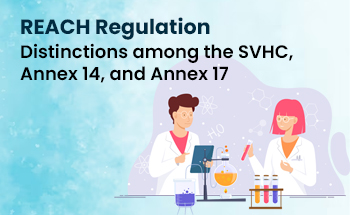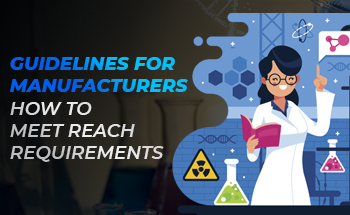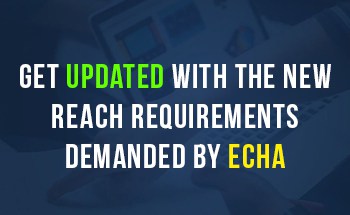
REACH stands for Registration, Evaluation, Authorisation and Restriction of Chemicals. This regulation was adopted by the European Union (EU) to improve the protection of human health and the environment, which were compromised using certain chemical substances. The regulation has been in effect since 1 June 2007 and the European Chemicals Agency (ECHA) is responsible for the administration of REACH in the EU.
Objectives of REACH
- Safety -Address the production and use of hazardous chemical substances which could impact both human health and the environment.
- Framework -Provides a structure to communicate substance information both upstream and downstream.
- Evaluation - Encourage alternative methods for the assessment of hazardous properties in the substance.
- Liability -Place the responsibility on the organizations who wish to produce and market their substances in the EU market. Hence, the organization must identify and manage any risks associated with the chemical substances to comply with the regulation. If the risks cannot be managed, the European Chemical Agency can restrict their movement in the EU market.
- Competition - Enhance innovation and the competitiveness of the EU chemicals industry.

Regulatory Impact on Business
Companies that manufacture or import substances that amount to more than one tonne per year are required to register with ECHA unless the substance is exempt. They are required to collect and collate information on the substance’s properties which is then submitted as a technical dossier to ECHA. REACH affects a wide range of companies across sectors like:

Manufacturer
Those who produce substances for their own use or distribute it across the EU market or export the same.

Importer
Companies who import substances must also adhere to the REACH compliance to restrict the movement of potentially hazardous substances within the EU market.

Downstream users
Companies that purchase chemicals or products for use in industrial activities will also have to provide information about the usage to their suppliers and ensure the safe use of the substance.
If there is no registration of the substance, then companies can no longer manufacture the substance or import them into the EU marketplace. Thus, this regulation impacts almost all businesses across the European Union (EU). Non-compliance could result in hefty penalties by REACH enforcement authorities and could ban hazardous substances if their risks are unmanageable.
REACH implementation challenges
Data Collection and Management
Extensive data is required on the properties and use of the chemical substances. The available data must be managed effectively in a unified database which can help identify problem areas. This is laborious and time-consuming.
Data Assessment and Substance Identification
Proper identification of the chemical as a substance, mixture or article, its hazardous properties and usage are crucial to determining if they are subject to the REACH regulation. While data assessment though complex is key to identifying risk management measures.
Supply Chain Complexities
Communication with suppliers to ensure substances in the supply chain are compliant can be difficult if the supply chain is complex, non-transparent or spans multiple countries.
Lack of Expertise
Extensive data is required on the properties and use of the chemical substances. The available data must be managed effectively in a unified database which can help identify problem areas. This is laborious and time-consuming.
Non-maintenance / Infrequent updates to Safety Data Sheet (SDS)
Proper identification of the chemical as a substance, mixture or article, its hazardous properties and usage are crucial to determining if they are subject to the REACH regulation. While data assessment though complex is key to identifying risk management measures.
Cost
Communication with suppliers to ensure substances in the supply chain are compliant can be difficult if the supply chain is complex, non-transparent or spans multiple countries.
APA's 4 effective steps to help you comply with REACH
Assessment to evaluate substances that are present in the products, identify potential risks and identify missing substances in the BOM by comparing with existing product data.
Engagement
Rigorous supplier follow-up to ensure data pertaining to materials and Substances of Very High Concern (SVHC) is collected.
Obtain Full Materials Declarations (FMDs), Safety Data Sheets (SDS)
Generate BOM-level compliance reports that can be submitted as a technical dossier to ECHA.
Additionally our in-house compliance tool ‘GreenCheck’ can automate your compliance process to
ensure timely and accurate submissions.








